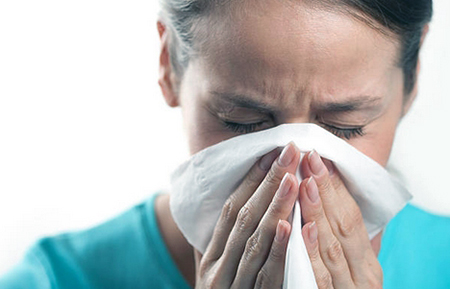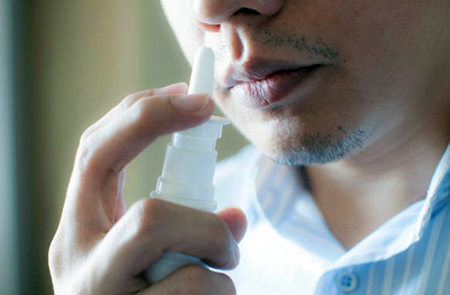What is bacterial sinusitis and how is it treated?


Diseases of the respiratory system rank first in the structure of the overall morbidity in the world, and the proportion of this pathology in adults is 27.6%, in adolescents - 39.9% and in children - 61%, which causes an unquenchable interest in this problem in practical medicine.
Acute bacterial infections of the respiratory tract including sinusitis can occur as an independent pathology. However, in most cases they are developed on the basis of viral infections as a complication. Their development is often promoted by the presence of adenoid vegetations, chronic tonsillitis, and sinusitis. In addition, recurrent respiratory diseases themselves promote the formation of chronic inflammation of the respiratory tract, alter the reactivity of the body, sensitize it, lower and change local and general immunity. The development of chronic diseases of the upper respiratory tract (URT), along with frequent acute respiratory diseases (ARI), is facilitated by their late and irrational treatment, chronic foci of infection, allergic respiratory diseases, and exposure to adverse environmental factors.
Short information about bacterial sinusitis
The names and definitions of the most common URT infections are as follows:
- Rhinitis is a disease of the nasal mucous membrane;
- Rhinosinusitis or sinusitis is a disease of the mucous membrane of the nose and sinuses;
- Nasopharyngitis or rhinopharyngitis is a disease affecting the mucosa of the nose, nasopharynx, upper larynx, uvula, arches and tonsils;
- Pharyngitis is an inflammation of the pharyngeal mucosa, upper part of the pharynx, palatine uvula and tonsils;
- Acute tonsillitis is an inflammation of the tonsils of the lymphadenoid pharyngeal ring (most often the palatine tonsils).
In case of acute inflammation in the URT, the first task is to identify the etiological factor of the disease, i.e. whether it is virus or bacteria that cause the malaise. It is crucial for a reasonable prescription of therapy, including topical and systemic antibiotics, which are contraindicated in the viral nature of the process.
The following symptoms most likely indicate the bacterial nature of the disease:
- Prolonged, more than 3 days, febrile fever (more than 38 C or 100.4 F);
- Shortness of breath without bronchial obstruction;
- Appearance of purulent deposits and purulent or mucopurulent discharge from nose, coughing out;
- Presence of leukocytosis, neutrophilia with a shift to the left (blood test results).

Bacterial complications of acute respiratory infections including sinusitis appear, as a rule, already on the 1st or 2nd day of the illness, and at a later date they occur more often due to superinfection. But there are also primary bacterial infections of the upper respiratory tract. The etiological factors in the occurrence of these infections are the so-called respiratory pathogens: pneumococci (Streptococcus pneumoniae), hemolytic group A streptococci (more often Streptococcus pyogenis), hemophilic bacillus, Mycoplasma pneumoniae pneumonia, moraxella catarrhalis, whooping cough (Bordetella pertussis) and parapertussis bacillus.
Currently, according to studies, there is a change in the epidemiology and etiological structure of acute infections of the upper respiratory tract, in particular, there is a tendency to a raise in the frequency of mycoplasma and chlamydial infections in acute respiratory infections, reaching up to 10% in the non-epidemic period and reaching 25-50% in time of epidemic outbreaks.
Particular attention in the pediatric population is paid to the group of so-called frequently ill children, a feature of which is high sensitivity to respiratory infection. Frequently ill children are a group of children isolated during dispensary observation, is characterized by a higher incidence rate of ARI than their peers. In kids of this contingent, the frequency of bacterial and especially viral-bacterial infections, including URT, is, on average, higher than in the population. In addition, they are more likely to develop various bacterial complications of acute infection, which are less sensitive to the standard therapy regimens.
Types of sinusitis
- Acute sinusitis (<3 months);
- Recurrent acute sinusitis (2-4 cases of flare-ups per year);
- Chronic sinusitis (> 3 months);
- Flare-up of chronic sinusitis (flare-up of existing and/or appearance of new symptoms).
Symptoms of sinusitis

Based on the localization of inflammation, the manifestations and consequences of a bacterial infection are very different and have symptoms of general intoxication and local pathological changes. In particular, due to edema of the mucous membrane of the first parts of the respiratory tract, the natural anatomy of the nasal sinuses is blocked by the edematous mucous membrane and pathological secretions. In this case, the arising block of fistulas complicates the transport of discharges from the sinuses. A similar situation develops when the mucous membrane of the nasopharynx is damaged, leading to blockage of the pharyngeal openings of the auditory tube. Stagnation of secretions, impaired ventilation and the associated phenomena of hypoxia (oxygen deficiency) are the starting point for the activation of the saprophytic flora, which will lead to an aggravation of the disease and the onset of bacterial complications such as purulent sinusitis (ethmoiditis, frontal sinusitis), acute purulent otitis media, purulent conjunctivitis, pneumonia.
To stop the phenomena of local inflammation and prevent complications, it is necessary to use decongestants and local antibacterial agents on the mucous membrane.
Decongestants, i.e. nasal drops/sprays, are an important component of the pathogenetic therapy of acute inflammation of the upper respiratory tract, providing a rapid restoration of the patency of the nasal passages, improvement of nasal breathing, drainage and aeration of the sinuses. But when prescribing vasoconstrictors in childhood, it is important to remember that most vasoconstrictors are not recommended for more than five days in a row. Do not exceed the doses indicated in the annotation, especially for drugs in the form of nasal drops that are difficult to dose.
Considering current recommendations to limit the use of systemic antibiotics for acute uncomplicated URT infections, the most promising is the local use of antibacterial and anti-inflammatory drugs. This makes it possible to deliver drugs directly to the focus of infection and inflammation (to the mucous membrane), which contributes to the achievement of maximum drug concentrations in the lesion focus with minimal systemic exposure. Local use of drugs reduces the risk of adverse reactions and damage to the normal microflora of the human body. Local antimicrobial drugs are prescribed in the form of sprays, insufflation, and inhalation.
The main requirements for drugs applied to the mucous membrane are:

- A wide range of antimicrobial action aimed at eliminating all possible pathogens of acute respiratory infections;
- No toxic effect and the possibility of prescribing them to patients for independent use;
- Low absorption capacity from mucous membranes;
- Low allergenicity;
- No irritating effect on the mucous membrane;
- Lack of inhibitory effect on mucociliary transport.
Since many drugs used in adults are not suitable for children, the choice of drugs, including topical ones, should be very carefully considered.
However, if a doctor considers that the disease has already passed into the severe stage and there is a high risk of complications, complex therapy should include systemic antibiotics such as Ceclor (Cefaclor), hyposensitizing and restorative agents, as well as immunoprotectors.
The tactics of for the treatment of rhinosinusitis are based on the severity of the disease course and complications. The severity is assessed by the combination of symptoms. For example, if orbital or intracranial complications are suspected, the course is always regarded as severe, regardless of the severity of other symptoms.
According to the severity there are:

- Mild course - nasal congestion, mucous or mucopurulent discharge from the nose and/or into the oropharynx, an increase in body temperature to 37.5 C or 99.5 F, headache, weakness, hyposmia; on the radiograph of the paranasal sinuses - the thickness of the mucous membrane is less than 6 mm;
- Moderate - nasal congestion, purulent discharge from the nose and/or into the oropharynx, body temperature above 37.5 C 37.5 C or 99.5 F, pain and tenderness on palpation in the sinus projection, headache, hyposmia, malaise, there may be radiating pains in the teeth and ears; on the radiograph of the paranasal sinuses - a thickening of the mucous membrane of more than 6 mm, complete darkening or fluid level in one or two sinuses;
- Severe - congestion, often profuse purulent discharge from the nose and/or into the oropharynx (but there may be their complete absence), body temperature above 38 C, severe pain on palpation in the sinus projection, headache, anosmia, severe weakness; on the radiograph of the paranasal sinuses - complete darkening or fluid level in more than two sinuses; blood test: leukocytosis, shift of the leukocyte formula to the left, increased ESR; orbital, intracranial complications or suspicion of them. Thrombosis of the cavernous sinus is an extremely serious complication, the mortality rate in which reaches 30% and does not depend on the adequacy of antibiotic therapy.
In conclusion, it should be noted that the progress of our knowledge about bacterial sinusitis and the expansion of the range of antibacterial agents have significantly improved their prognosis and in most cases allow avoiding the development of purulent complications.
Post by: Natalie Keller, M.D. General Health Centre, Minneapolis, Minnesota
(Updated at Apr 15 / 2024)
Ceclor articles:
Some of the trademarks used in this Web Site appear for identification purposes only.
All orders are reviewed by a licensed physician and pharmacist before being dispensed and shipped.
The statements contained herein are not intended to diagnose, treat, cure or prevent disease. The statements are for informational purposes only and is it not meant to replace the services or recommendations of a physician or qualified health care practitioner. If you have questions about the drugs you are taking, check with your doctor, nurse, or pharmacist.